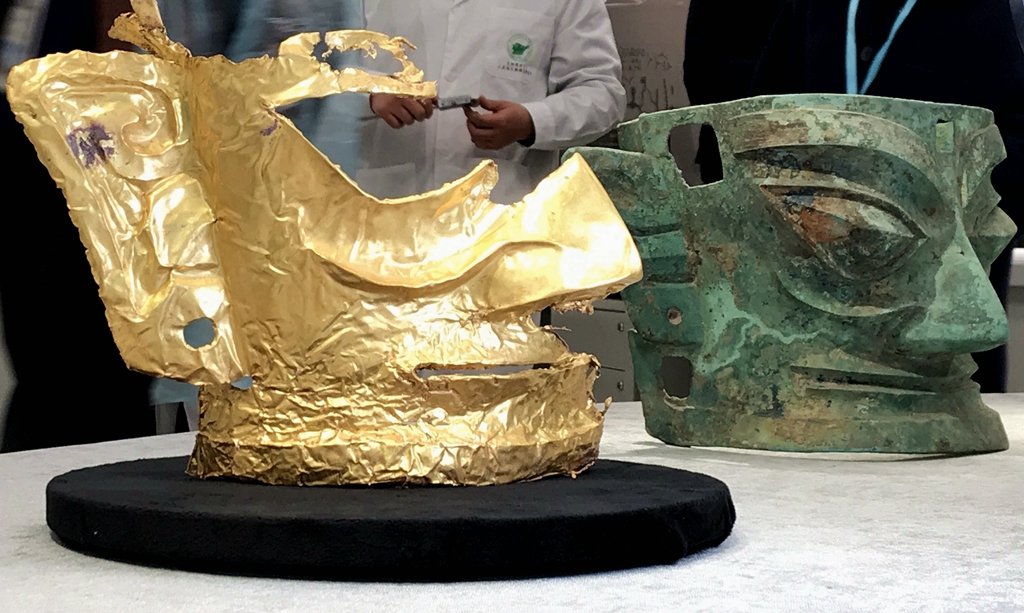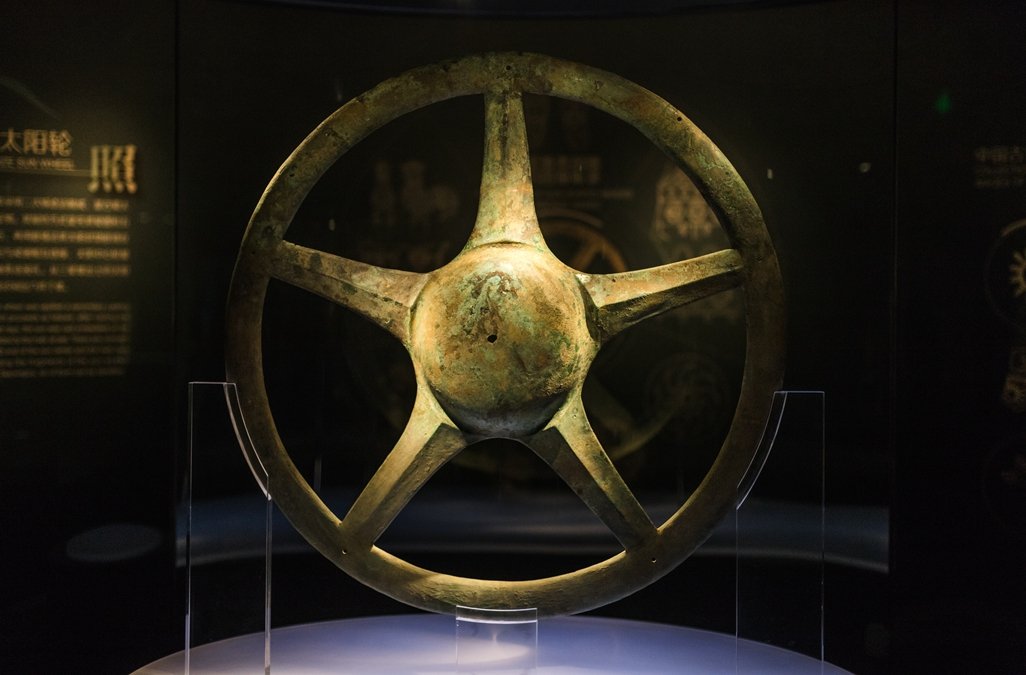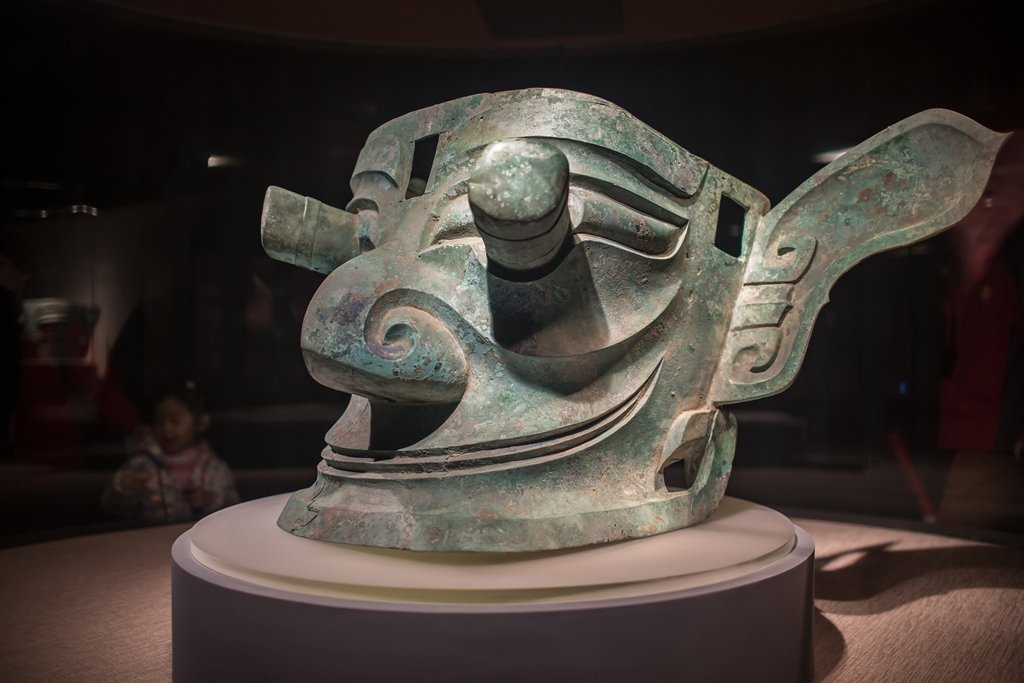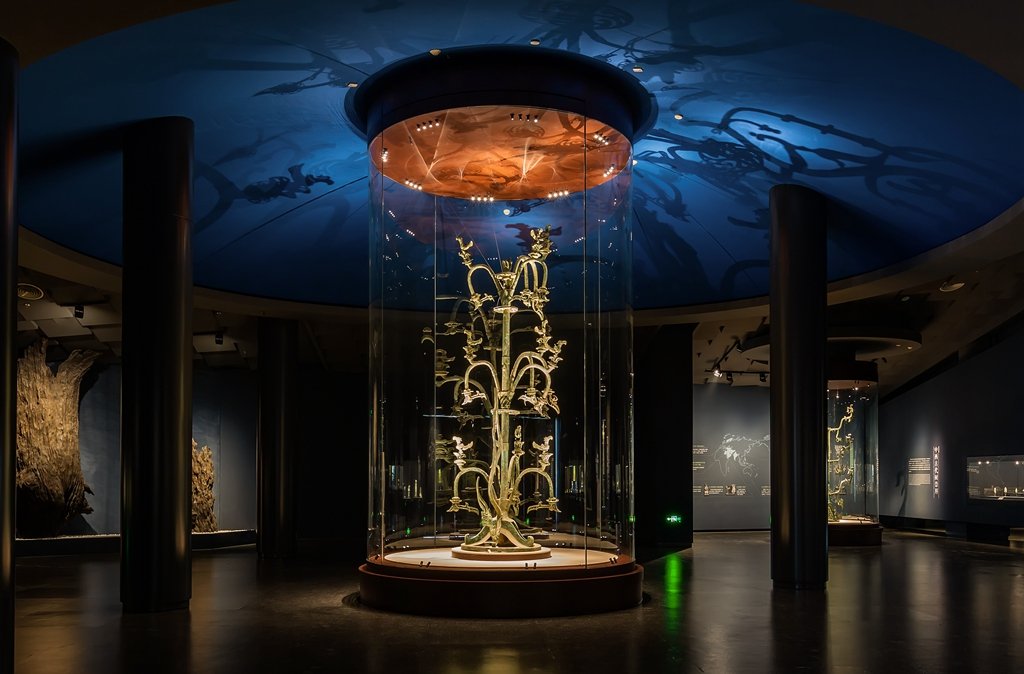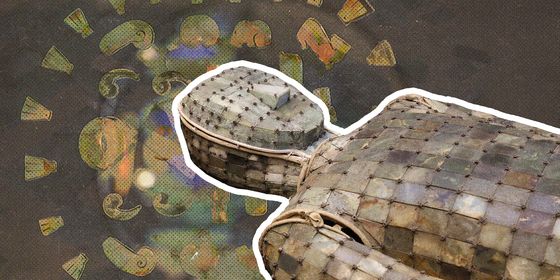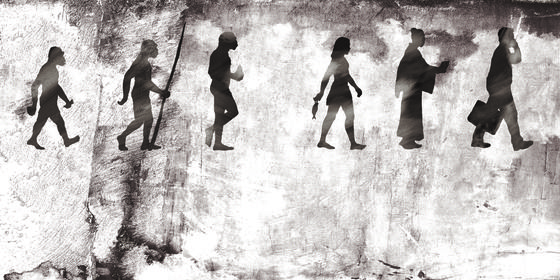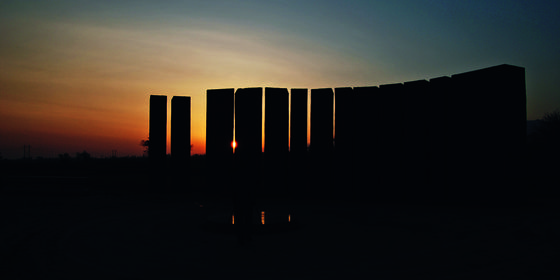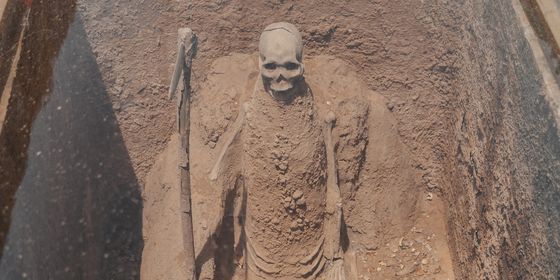The 3,000-year-old Sanxingdui Culture is a mysterious complication in ancient Chinese history
Ever since archeologists unearthed a series of strange and spectacular artifacts from the Sanxingdui Ruins in China’s Sichuan province in 1986, there have been suspicions that this site may be otherworldly.
A number of bizarre bronze masks too big for humans, bronze heads decorated with gold foil, and other curiosities (including figurines with a suspicious resemblance to the modern Angry Birds game) have promoted fantasies that Sanxingdui was the remains of an alien civilization—or more reasonable suppositions that it is a previously unknown Bronze Age culture dating back 3,000 years ago. A new round of excavations, whose findings were presented to the public in March, may give further clues as to how this civilization rose and fell.
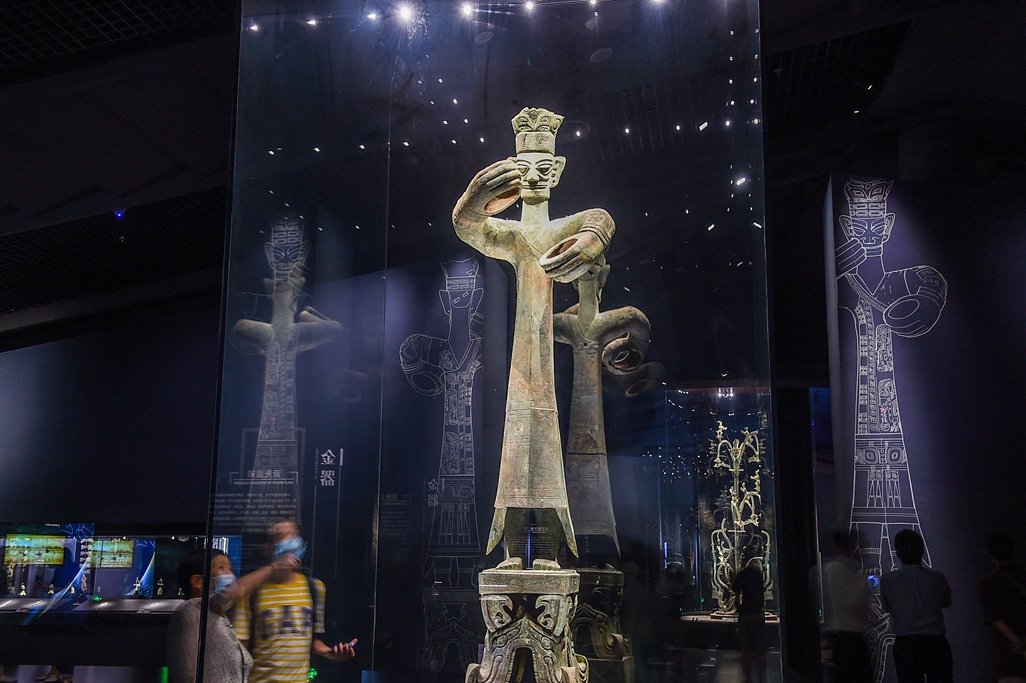
The standing bronze figure with long robe and crown was excavated from Sanxingdui in 1986. At 1.8 meters tall, with a base over 2.6 meters high, it is the tallest human statue yet to be unearthed in China. The object he is holding is still debated: a piece of ivory, a staff, a jade ritual object, or perhaps this was a particular gesture used in a ceremony. No bronze representations of humans, whether masks or statues, have ever been unearthed in China before. (VCG)
Sanxingdui may be the most significant archeological discovery in modern China, as it complicates the idea that the Yellow River civilization was the only advanced Bronze Age culture in China. With apparently no written script, this mysterious culture has captured the nation’s imagination for decades, and ignited long-lasting academic debates about its society and history.
First discovered in 1929 by a local farmer of the surname Yan, who accidentally found several jade objects when digging a pond near his home, Sanxingdui was first excavated by Dr. David Crockett Graham, an American missionary, anthropologist, and archeologist. But it wasn’t until two full pits of relics were found in 1986 by experts from the Sichuan Provincial Cultural Relics and Archeology Research Institute that Sanxingdui became an important site.
Archeologists have made routine excavations at the site ever since, but the latest large-scale dig began after new relics turned up in late 2019. Since then, six new pits have been discovered, with over 500 intriguing relics excavated: a partial golden mask, gold decorations, bronze ware, and even traces of silk.
But mysteries over the Sanxingdui Culture remain: Who were the people living at this site, and what was their society like? How did this civilization disappear? Since no written script has been discovered, archeologists and historians are piecing together the clues—literally, as all the relics found to date have been smashed into pieces, burned, covered with a layer of ivory, and buried.
Experts believe most of these relics are ritual objects that suggest a religion centering around worship of the sun. No human remains have been discovered in the pits, prompting researchers to believe the site to be a place of worship—perhaps a large temple—instead of a tomb. As to why the relics were destroyed, some argue it was a part of a worship ritual, whiles others propose it could have been the act conquerors after they invaded a city.
China's dominant and better-known Bronze Culture is the Shang dynasty (1600 – 1046 BCE), which existed at around the same time of Sanxingdui and was based in the lower reaches of the Yellow River. No human statues have ever been found from the Shang civilization, whose typical bronze wares were ding (鼎) and zun (尊), large vessels that held food and drink during sacrificial rituals. These ceremonies were recorded in scripts carved on the vessels and on animal bones. The Shang worshiped their ancestral gods, while their chief conducted human sacrifices for ritual ceremonies.
But neither the Shang's type of bronze ware, nor their religious practice, seem to have any connection with the Sanxingdui culture. In fact, there seems to be clear distinction between the two societies: Valuables like gold, jade, and large bronze vessels were found in many Shang tombs as an indication of social status and private property. However, valuables in Sanxingdui seemed to be for the purpose of worship and not owned by any individual.
Archeologists have also identified the ruins of an ancient city covering an area of 3.5 kilometers on the Sanxingdui site. There appears to be a division of districts, as well as a large building complex, and water conservation facilities. The site takes its name, Sanxingdui (“Three-Star Mound”), from a Qing dynasty (1616 - 1911) name for the entire locality, which referred to three hillocks that used to align here like a constellation. Researchers believe these mounds could be the remains of an ancient city wall.
If proven to be unrelated to the Shang, Sanxingdui would represent a distinctive branch of ancient Chinese culture. So far, however, most theories about this mysterious culture have relied on ancient records and even myth.
There certainly was no lack of legends in mainstream historical writings that seem to fit the Sanxingdui Site: in particular, about an ancient Shu Kingdom in Sichuan. For instance, Li Bai (李白), the great Tang dynasty (618 – 907) poet, described the kingdom in his poem “The Arduous Road to Shu (《蜀道难》)”: “From Can Cong (蚕丛) to Yu Fu (鱼凫), the founding of the state is obscure. For 48,000 years, they never communicated with the outside world.”
Can Cong, Bo Huo (柏濩), and Yu Fu were three ancient kings of Shu, who each ruled for a hundred years, according to Chronicles of Huayang (《华阳国志》), a fourth-century gazetteer on southwest China. Afterward, they and their people became immortals and ascended into heaven. Can Cong was also credited for teaching the ancient Shu people to make silk. In the Chronicles, Can Cong’s eyes were described as muzong (目纵), which can either mean “vertical eyes” or “protruding eyes.” This is cited by some researchers to suggest that the large bronze mask with protruding eyes from Sanxingdui were ritual objects that symbolized Can Cong.
The 1986 excavation also unearthed eight bronze trees, the best-preserved of which stands at almost four meters tall. The tree is divided into three layers and nine branches, with a bird figure standing on each branch. This recalls the description of a “magic tree” recorded in the Classic of Mountains and Seas (《山海经》), a book of legends dating back to before the 3rd century BCE. According to the legend, there used to be ten suns in the world, and their spirits were embodied by golden ravens who rested on a magic tree called fusang (扶桑) in the Eastern Sea. One raven would stand on top of the tree while the other nine ravens stood on the branches below, and they would switch their positions while the suns took turns to move across the sky.
The disappearance of Sanxingdui civilization is even more intriguing. Previously, it was believed that the culture was wiped out by invaders or driven away by floods. However, more evidence has since revealed that it might be internal forces that caused the decline of this ancient people.
The most popular theory about the rise and fall of Sanxingdui was proposed by archeologist Sun Hua, Dean of Peking University Archaeology and Museology College, in 2003. The bronze figures found at the site have two different hairstyles, pinned up and braided. Taking other relevant findings into account, Sun deduced that the former was worn by priests, and those with divine connections; while the latter marked secular noblemen. The two likely ruled together until the priest class gained more influence and wealth, and conflicts broke out. The noblemen destroyed the temples, and smashed and burned the religious objects. When the dust settled, the new rulers of Sanxingdui decided to abandon the damaged city for a new beginning.
This narrative was backed up by the discovery of the Jinsha Ruins (金沙遗址) in the western suburbs of Chengdu in 2001, south of the Sanxingdui site. Archeologists propose this is a continuation of Sanxingdui Culture, as the two ruins share many cultural symbols such as the bronze masks and statues, bird figurines, and gold decorations. A complete gold mask found in Jinsha in 2007 closely resembles the partial gold mask found in the latest Sanxingdui excavation. Tellingly, among the bronze figures in Jinsha, the pinned-up hairstyle seems to have completely vanished, leaving only figures with braided hair.
It has commonly been held that the Yellow River Plain was the birthplace of advanced Chinese civilization, but the amazing discoveries at Sanxingdui reveal that ancient China is more complex than anyone had thought before. In the future, more findings may change history as we perceive it.







